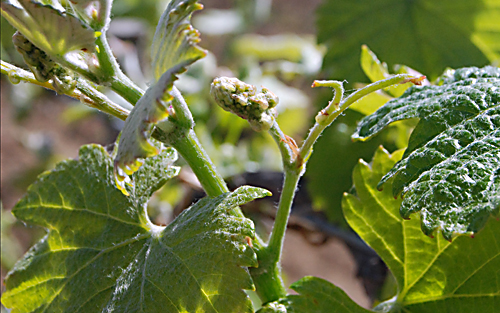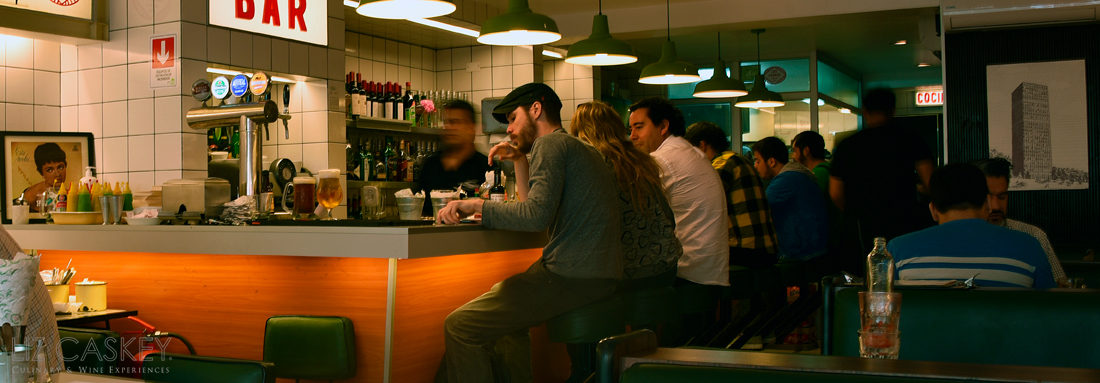
Wine has a meaningfulness no other beverage possesses—beyond water.
It can convey history; say thank you; it’s the ultimate gesture of hospitality; and cellaring wines is, for me, a way of capturing and storing their warmth to be enjoyed whenever I wish.
A bottle of winery is a liquid battery filled with the juice of memory.
It is charged with sunshine, flavor, and is the culmination of a series of processes that made it the final product I am tasting at this moment. When I think about working backwards from a finished wine, it seems like an analogy of life—every seemingly little decision had an impact on its direction, its outcome, its personality, and ultimately what I have in my glass.
No other substance can so intrinsically express the Earth’s geology.
Terroir. Forget about the buzz, it’s real. While there are differences in foods like tomatoes and potatoes, these are due to variety. No vegetable can reflect a hillside’s soil, the amount of sunlight it receives, the weather during a year’s time like the vid. The vid is explicitly capable of revealing its geological context through its fruit. What a beautiful thing.
Drink of my passion.
Wine enamored me because of terroir combined with its human story. I am in absolute awe of the people who dedicate their lives to making this humble, artisan-made beverage. When done with love it doesn’t matter if it’s a garagiste or grand cru; it’s the man’s passion, his energetic imprint, that is sealed into the wine forever (or until it is all drunk). Meet the winemaker and you will know already the personality of his wine. Try the wine and you have tasted the passion of the winemaker.
There’s always an occasion fit for wine
Maybe it’s Wednesday night pizza dinner and that US$10 Zinfandel is calling you. Or a friend drops in unexpectedly and you crack open a crisp Cava. That simple glass of bubbly transforms the evening on the terrace into an impromptu celebration. Or it’s your anniversary and it’s time to break out the Opus One from 1997 you have been saving for a candlelit dinner. Perhaps you had a horrendous afternoon at the office and the only thing that will save the day is tapas, a glass of wine, and your buddies. You decide when wine is appropriate. Then, just let it work its magic.
1,001 Aromas
Wine is sensual, pleasureable. It all starts through the nose: the bouquet. Although we drink wine and feel its texture through our palate, a large part of wine is truly about aromas. Smell is directly connected to the part of our brain that triggers memory, humor, and emotions. That’s why, when we sniff out a scent in the wine, at times we may not be able to identify it with words, but it takes us back to a familiar memory. You may flash back for a nano second to your grandmother’s kitchen making raspberry jam as a kid. With a trained nose, you can even smell out the wine’s age, region, assemblage, and how it was produced. It gives clues about what’s to come next when you sip it.
Variety, Variety
The old addage goes that variety is the Spice of life. Well look no further. There are hundreds of grape varieties worldwide. Add to that, thousands of microregions and styles. Literally, you could try a bottle a day for a lifetime and never totally exhaust your options.
Travel the World in a bottle
Wine can transport you to faraway places with its aromas and flavors. Essentially, it is a snapshot at a specific moment in time of a place. As you open that 1978 Romanée Conti (okay, in my dreams, but let’s pretend for the sake of this example), what does the vineyard look like? How would it feel to be in that part of Burgundy? What was the weather like that year? Was it a cold, rainy summer or hot? What was happening in the World as they harvested that grand vintage (in 1978, I was learning to walk…) ? The wine will tell you the story of its origin, subtley, as you taste it. All it takes is being open and trusting those cues as you get them. At the end, wine is a language, like art, and you don’t need planes to get there to experience it.
Wine makes food taste better
If you found a condiment that would turbocharge flavor for everything you ate, wouldn’t you want to use it all the time? Well, good news, it’s wine!! Flavor components in wine like acidity and tannins naturally compliment food. Tangy goat cheese intensifies with Sauvignon Blanc; the tannins of a wild Tannat are tamed with a perfectly grilled steak; the floral gaminess of lamb is played up by violet aromas in Syrah; the examples are endless.
Wine is good for you
Research now shows that 1-2 glasses of wine per day have health benefits—from antioxidants in red wine tannins to reducing gallstones and the instances of heart attacks and strokes. However, over two glasses, all health benefits are lost and the effect of alcohol and excess calories (sugar) set in. And no, you cannot “accummulate” glasses during the week and cash them in on the weekend. Get in the habit of a glass of wine with dinner, or with lunch, like they do here in South America and Europe. Now you know why coffee is so popular there–to stay awake through the rest of the day!












